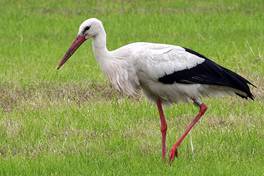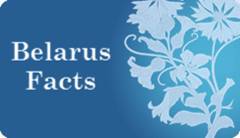III. Find pairs of synonyms. Translate them into Russian.
1. moderate | P. to be situated |
2. area | Q. national park |
3. to be located | R. food processing |
4. animal husbandry | S. mineral field |
5. national reservation | T. territory |
6. mineral deposit | U. mean |
7. food industry | V. mild |
8. average | W. cattle breeding |
IV. Translate the sentences into Russian.
1. Minsk is located on the river Svisloch and occupies an area of 200 sq km.
2. The main religion in the country is Russian Orthodox Christianity.
3. The second most popular religion is Roman Catholicism.
4. Narachansky National Park, in the Minsk region of Belarus was established in 1999.
5. The Republic is rich in non-ore minerals.
6. Peat reserves are widely spread in Belarus.
7. In accordance with the Constitution the legislative body is the Parliament consisting of two chambers.
8. The executive power in the republic is exercised by the Council of Ministers.
9. Great attention is devoted to technical re-equipping of light and food industry.
10. Timber processing, furniture making, paper making, light and food industries are the main branches of industry for local consumption.
IV. Read and translate the words with the same root.
1) To border, borderland, boundary; 2) to cover, covering, covered; 3) to average, average; 4) to exercise, exercising; 5) to belong, belonging; 6) humid, humidity; 7) moderate, moderately; 8) located, location, locality, local; 9) to consume, consumption; 10) territory, territorially; 11) administration, administrative; 12) to vary, varied, variety; 13) to protect, protection.
V. Insert the missing preposition.
1. The Republic of Belarus borders … Poland, the Baltic States, Russia and Ukraine.
2. All rivers of the Republic belong … the sea-basins of the Black and Baltic seas.
3. The Republic of Belarus is situated … the eastern part of Europe.
4. The country is famous … its national reservations.
5. The auroch is the pride … the the Belavezhskaya Pushcha.
6. More than one third of the republic’s area is covered … forest and bushes.
7. What non-ore minerals is the Republic rich … ?
8. Natural conditions of Belarus are favorable … agriculture.

TEXT 1 |
VI. Read and translate the text.
republic of Belarus
1. Geographical position
 Belarus is located in the eastern part of Europe. The total area of Belarus is 207,600 square kilometers. It borders on Lithuania and Latvia in the north-west, Ukraine in the south, Russia in the east, and Poland in the west. The location has made Belarus an important trade and transport route between Europe and the CIS.
Belarus is located in the eastern part of Europe. The total area of Belarus is 207,600 square kilometers. It borders on Lithuania and Latvia in the north-west, Ukraine in the south, Russia in the east, and Poland in the west. The location has made Belarus an important trade and transport route between Europe and the CIS.
2. Population, religions and languages
 The population of Belarus is 9.46 million people (on 1 January 2013). Over 70 percent are urban population. More than 80% of the population are ethnic Belarusians. Most of the rest are Russians, Poles and Ukrainians. The country has two official languages: Belarusian and Russian. The main religion in the country is Russian Orthodox Christianity. The second most popular religion is Roman Catholicism.
The population of Belarus is 9.46 million people (on 1 January 2013). Over 70 percent are urban population. More than 80% of the population are ethnic Belarusians. Most of the rest are Russians, Poles and Ukrainians. The country has two official languages: Belarusian and Russian. The main religion in the country is Russian Orthodox Christianity. The second most popular religion is Roman Catholicism.
3. Administrative division
The Republic of Belarus is divided territorially into six Oblasts (regions) with their administrative centres in Minsk, Brest, Vitebsk, Gomel, Grodno and Mogilev. The country includes 118 administrative districts (rayons). The Republic of Belarus includes 110 towns, of which 15 towns have population over 100,000 and 103 urbanized populated localities.
4. Capital
Minsk city is the capital of Belarus, its political, economic, scientific and cultural centre. It is one of the oldest and most beautiful cities in the republic. The first recorded mention of the city goes back to 1067. Minsk today is a modern international city. More than 1.9 million people live there. It also has excellent transport links including Minsk airport, several major train stations, the Minsk metro underground network, and a well-developed road system.
5. Climate and landscape
Belarus has a moderate continental climate, with cool humid winters and warm summers. The average temperature of January is -6°C. In July the temperature averages +18°C.
 Belarus is known as the country of blue lakes, rivers, green meadows and swamp with varied animal and plant life. There are over 20 thousand rivers and streams flowing over the territory of Belarus, all of them belong to the sea-basins of the Black and Baltic seas. The longest rivers are the Dnieper, the Nieman, the Zapadny Bug and the Zapadnaya Dvina. The republic has about 11,000 lakes. The largest of them are the Naroch, the Osveyskoye, and the Chervonoye.
Belarus is known as the country of blue lakes, rivers, green meadows and swamp with varied animal and plant life. There are over 20 thousand rivers and streams flowing over the territory of Belarus, all of them belong to the sea-basins of the Black and Baltic seas. The longest rivers are the Dnieper, the Nieman, the Zapadny Bug and the Zapadnaya Dvina. The republic has about 11,000 lakes. The largest of them are the Naroch, the Osveyskoye, and the Chervonoye.
About 40 per cent of the Republic’s area is covered with forest and bushes. There are five National Parks in Belarus, protected by the State. The most famous national reservation is the Belavezhskaya Pushcha which is home to many ancient oak trees dating back more than 500 years, as well as venerable ash, pine and fir trees. There are also significant animal and bird populations here, including the world’s largest population of the rare European bison – the auroch.
6. Natural resources
In Belarus, about 30 types of mineral resources have been found (over 4,000 mineral fields and deposits). Of special significance among them are potassium salts: by their industrial reserves the country is among the leading countries in Europe. The Republic is rich in non-ore minerals like granite, dolomite, chalk, clay, loams, sand and gravel materials. Peat reserves are widely spread in Belarus as well.
7. Economy of Belarus
The economic potential of Belarus is largely dependent on industry. Belarusian industry produces heavy-duty trucks and tractors, large-capacity dump trucks, refrigerators, TV sets, fertilizers, meat and dairy products. They make its chief exports mainly to Russia, Ukraine and EU countries. Timber processing, furniture making, paper making, light and food industries are the main branches of industry for local consumption.
Natural conditions of Belarus are favorable for agriculture which mainly specializes in animal husbandry production. Belarus's main agricultural products are potatoes, flax, sugar beets, rye, oats and wheat, as well as beef and dairy products.
8. State system
Belarus is a presidential republic, governed by the President and the National Assembly. The Parliament – the National Assembly – is a representative and legislative body of the Republic of Belarus. The Parliament consists of two chambers – the House of Representatives (110 deputies) and the Council of the Republic (64 members).
Executive power in the Republic of Belarus is exercised by the Council of Ministers of the Republic of Belarus headed by the Prime Minister.
Text vocabulary
· auroch | · зубр |
· ancient oak trees | · многовековые дубы |
· CIS (Commonwealth of Independent States) | · СНГ (Содружество независимых государств) |
· EU (European Union) | · Европейский Союз |
· fertilizer | · удобрение |
· flax | · лен |
· heavy-duty truck | · грузовой автомобиль большой грузоподъемности |
· large-capacity dump truck | · большегрузный самосвал |
· mention | · упоминание |
· oat | · овес |
· refrigerator | · холодильник |
· rye | · рожь |
· sugar beets | · сахарная свекла |
· trade and transport route | · торговый и транспортный коридор |
· transport links | · транспортное сообщение |
· urban | · городской |
· urbanized populated localities | · населенные пункты городского типа |
· venerable ash, pine and fir trees | · древние ясени, сосны и ели |
· wheat | · пшеница |
CONVERSATION PRACTICE |

|
Из за большого объема этот материал размещен на нескольких страницах:
1 2 3 4 5 6 7 8 9 10 11 12 13 14 15 16 17 18 |





